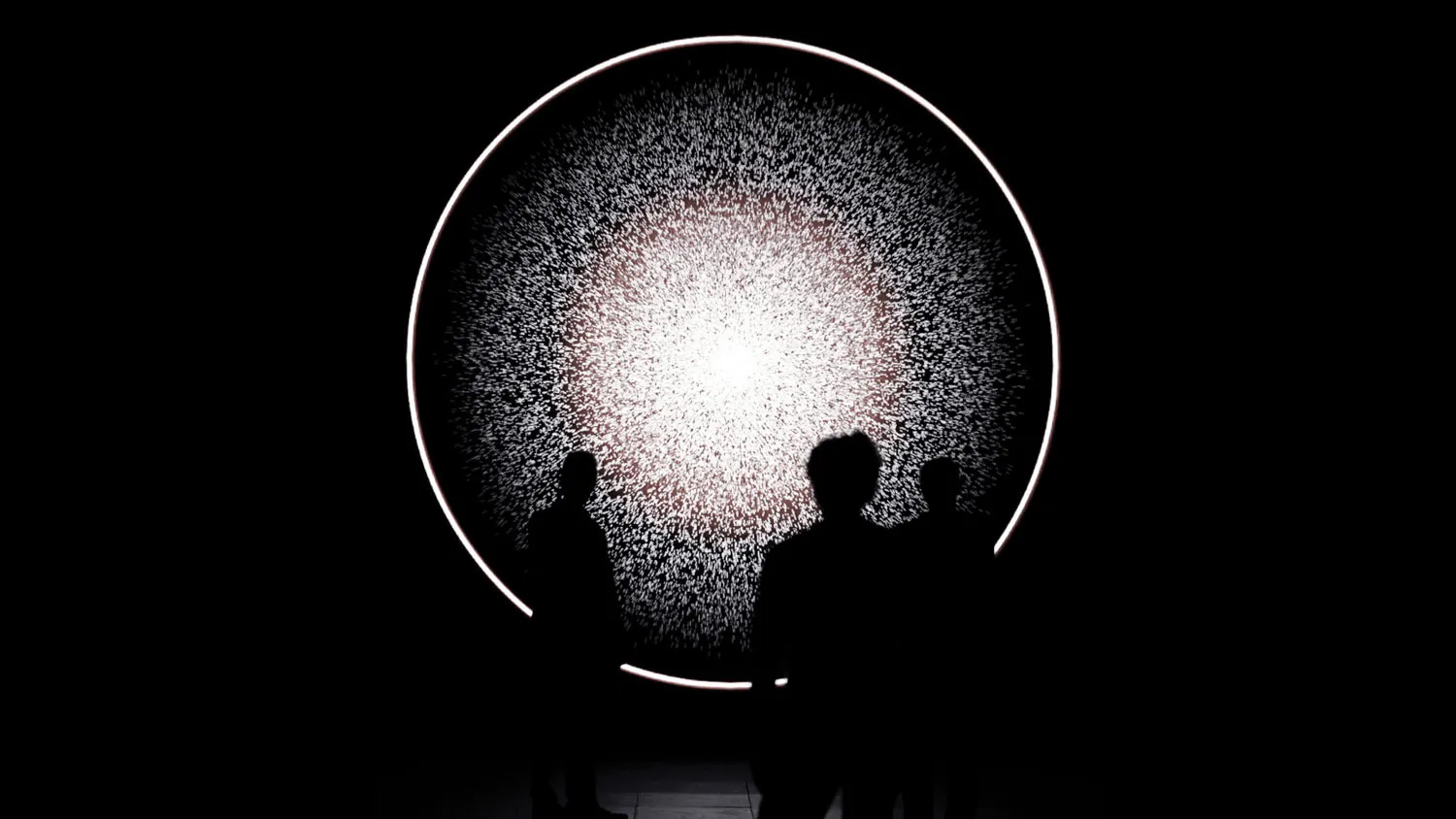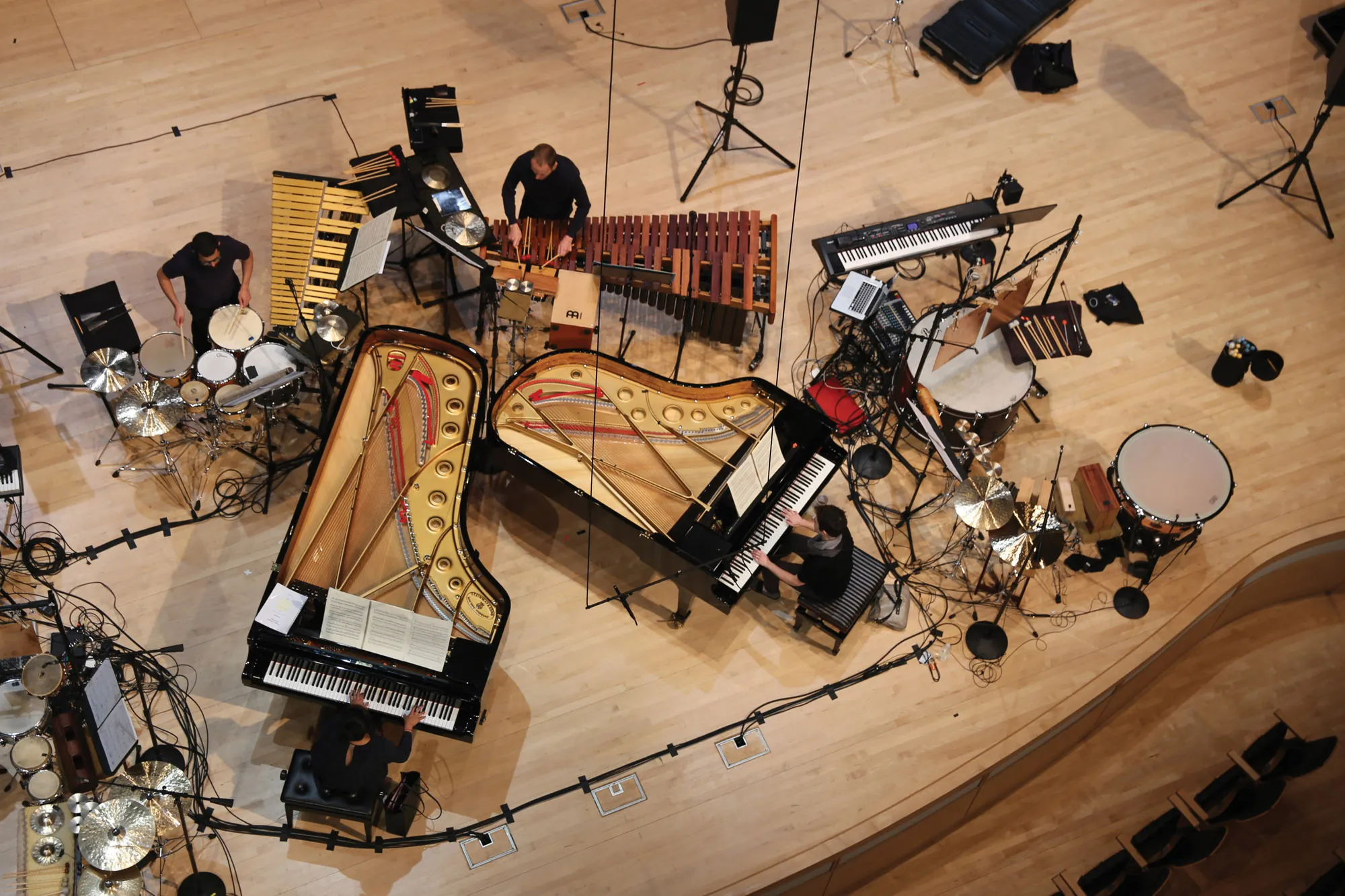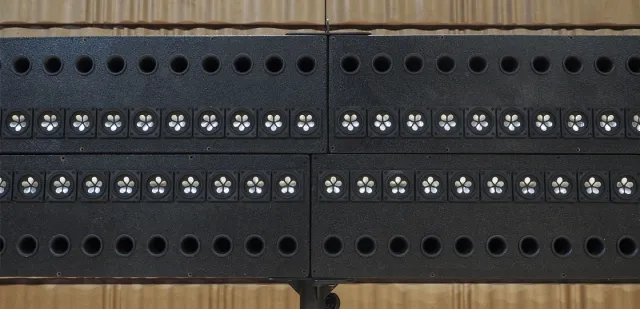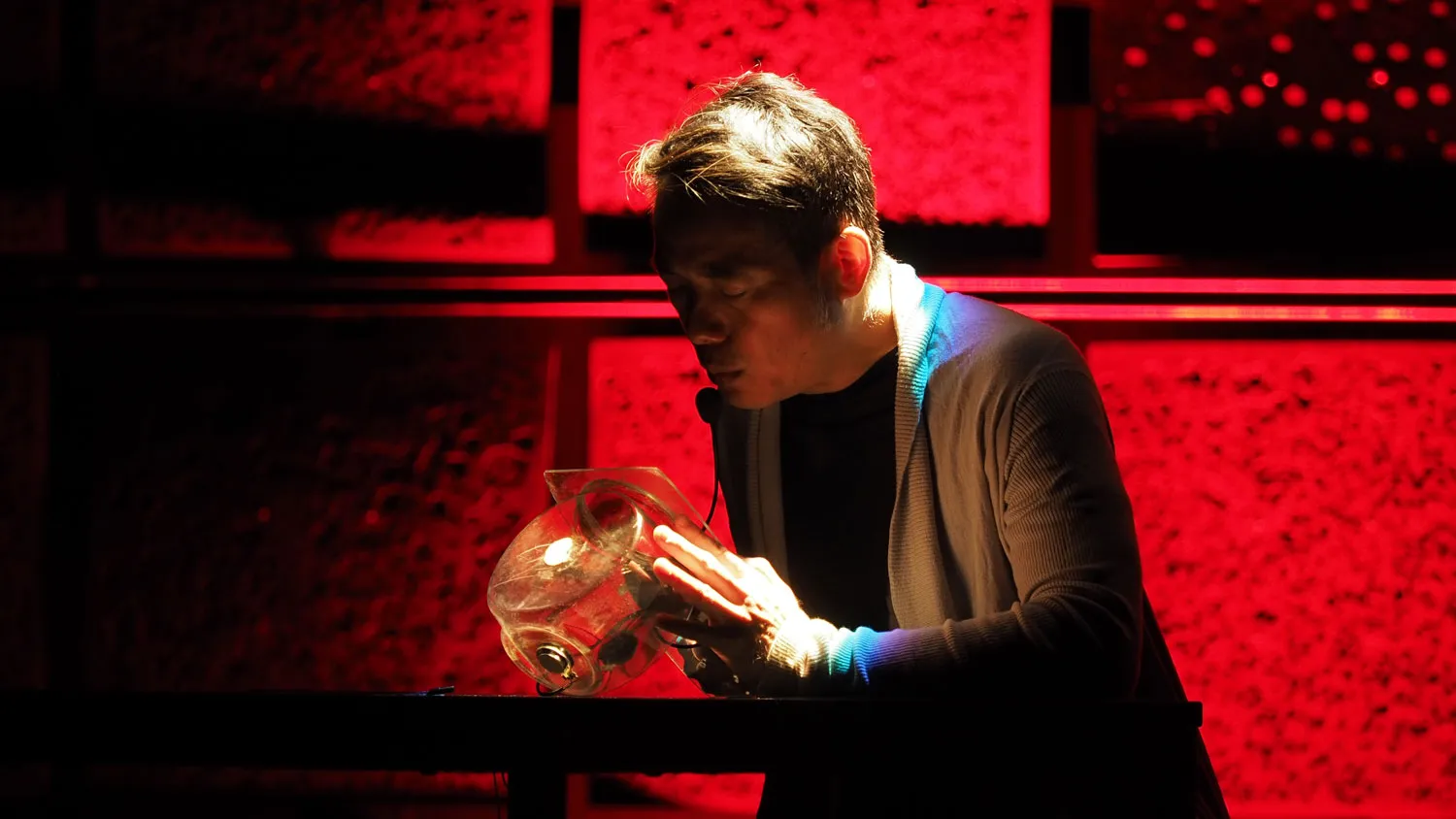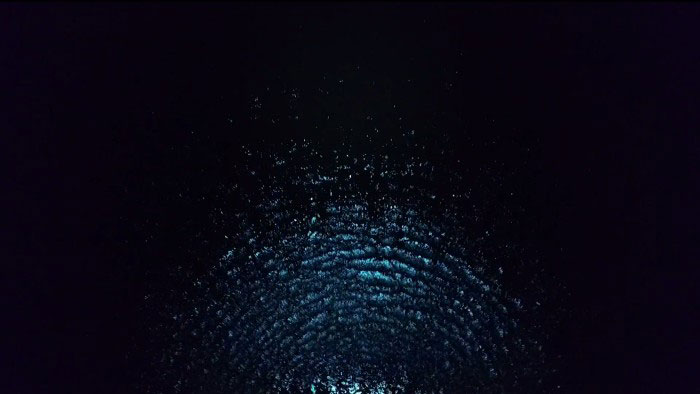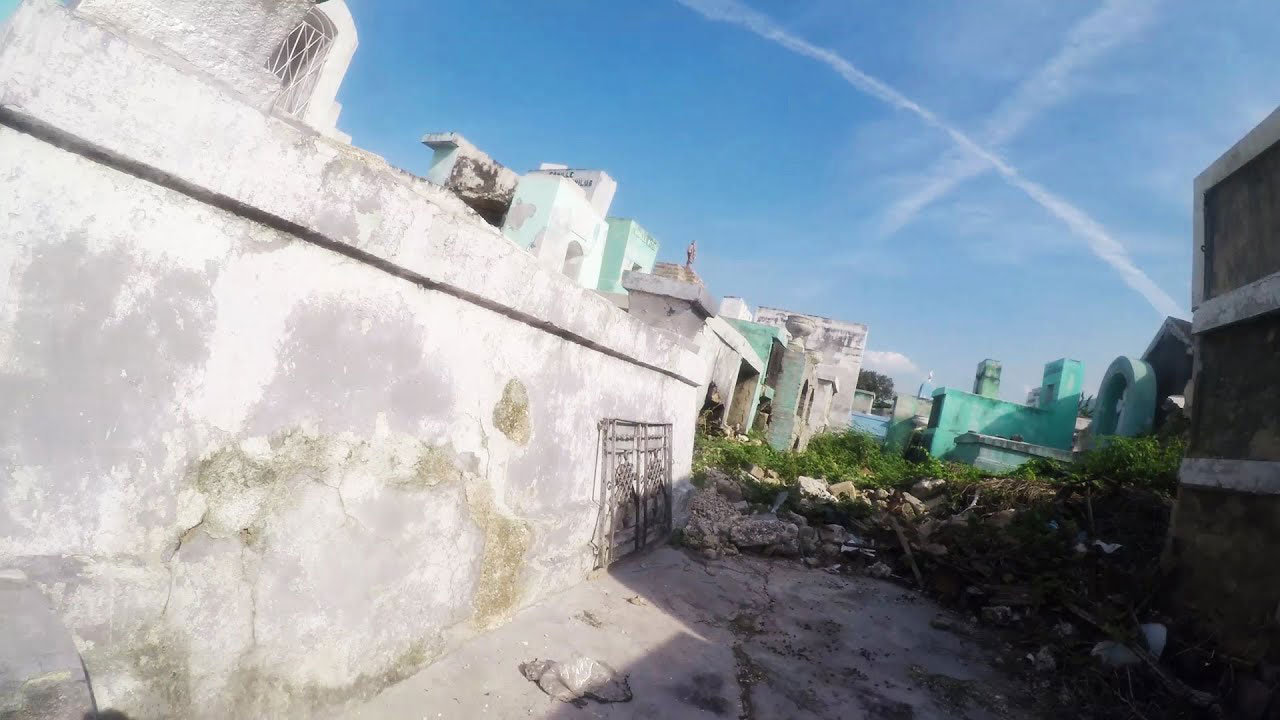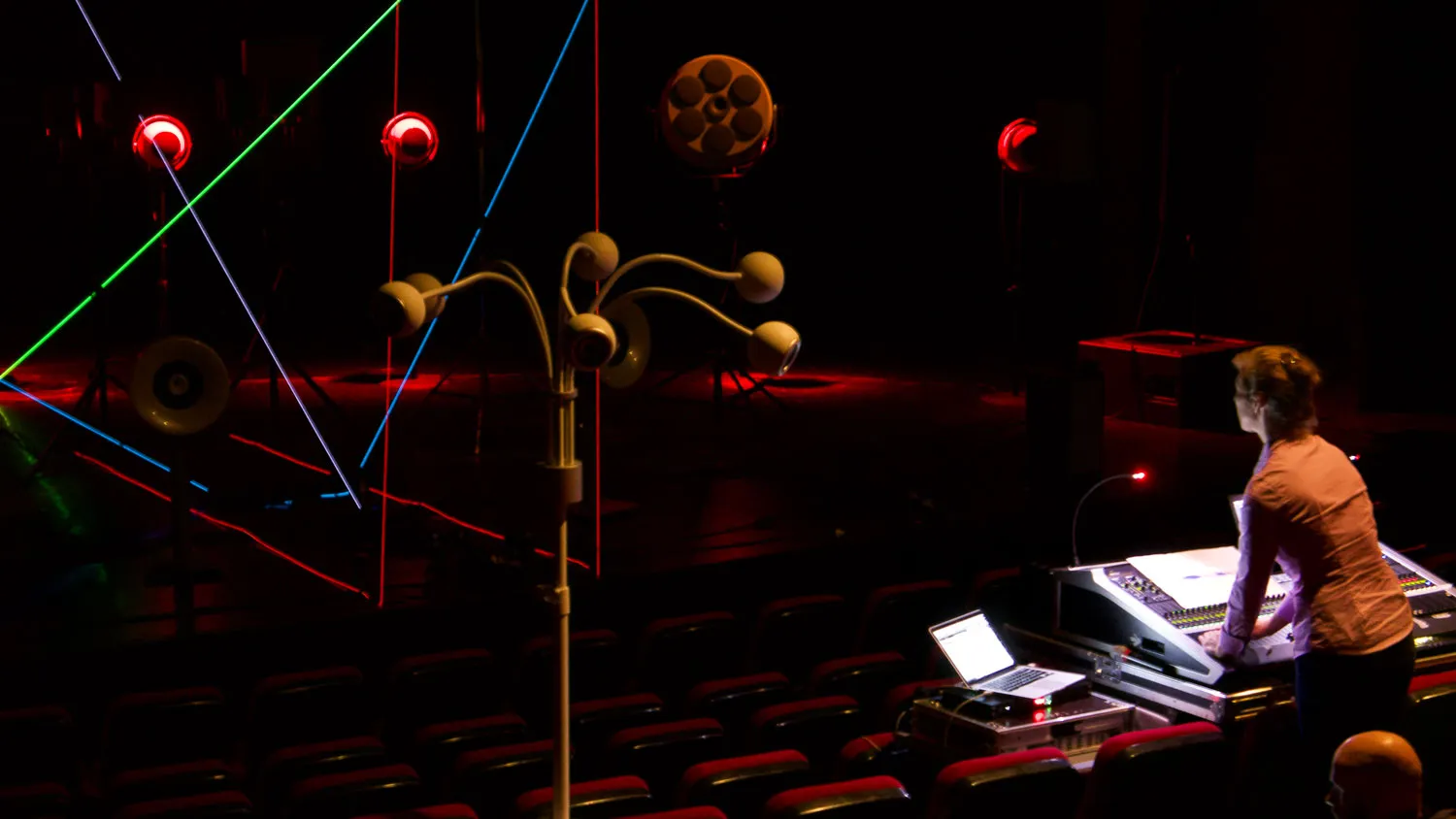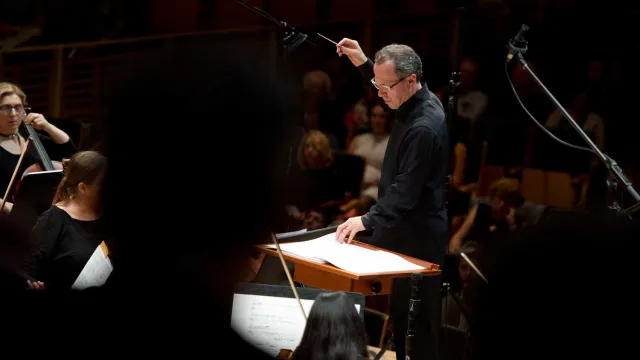The title of this screening is named after German thinker Walter Benjamin’s “thought-figures,” as he described the format of his 1929 essay collections Short Shadows. Like Benjamin’s thought-figures, each film entangles political narrative, aesthetic form, and technical subjectivity in an attempt to capture the essence of a place and time. In Gede Vizyon, a Haitian goat circles a labyrinthine Port-au-Prince graveyard, and a wayward drone strays from its intended path in Meridian, while a series of sculptures are lovingly captured by a ghostly lens in The Maid.
Calum Walter’s Meridian follows the last unit in a fleet of autonomous machines sent to deliver an emergency vaccine. The film shows footage transmitted by the machine before its disappearance, tracing a path that seems to stray further and further from its objective. Meridian is inspired by a real event that occurred in Washington, D.C. on July 17, 2017, where an automated security robot from the company Knightscope was found floating in a fountain at the building it patrolled. It had plunged into the water while on a routine patrol, spurring speculation about whether the machine had chosen to end its life or if this was just a glitch in an otherwise reliable new technology.
Titled after novelist Robert Walser’s short story that follows a maid as she searches for her lost charge, then dies of joy upon finding her, Carissa Rodriguez’s The Maid captures the places that house American artist Sherrie Levine’s Newborn sculptures. From storage crates to the glassy tables of art collectors, and from plinths to auction rooms, the intimate portraits of the artworks lay bare the architectural, social, and financial infrastructure that has taken care of them since they left the artist’s studio. Made from either crystal or sandblasted glass, they were each cast from the mold of Constantin Brancusi’s canonical egg-shaped sculpture Le Nouveau-Né, which was produced in 1915 in marble and subsequently in bronze. In producing these new versions, the artist not only takes authorship of an artwork from a celebrated male Modernist, but also imposes a shared parental position. Rodriguez’s film traces yet another transition by capturing the sculptures in their new homes.
The camera in Marcos Serafim, Zé Kielwagen, and Steevens Simeon’s Gede Vizyon is guided at riotous pace by one of the inhabitants of the Grand Cemetery in Port-au-Prince, Haiti. Gede Vizyon is part documentary portrait and part magical realism. It entwines local folklore and Haitian Vodou culture with a portrait of a place whose architecture bears traces of both the living and the dead. The “goat’s-eye” view carries us on a low, jagged path through a visual history of the site, charting the damage wrought by the 2010 earthquake, and the people, animals, plants, and traditions that continue to inhabit it. Gede Vizyon is narrated through poetry written in response to the images by Ougan (priest) Jean-Daniel Lafontant, his words entangled into a soundtrack of religious songs performed by Mambo (priestess) Jacqueline.
Please join us following the screening for a Q&A with curator Vic Brooks, filmmaker Marcos Serafim, and filmmaker / Rensselaer Arts faculty Zé (Jefferson) Kielwagen.
Program
- The Maid (2018)
- Carissa Rodriguez
- Meridian (2019)
- Calum Walter
- Gede Vizyon (2018)
- Marcos Serafim, Zé Kielwagen, and Steevens Simeon
Main Image: Carissa Rodriguez, The Maid (2018). Courtesy the artist.
